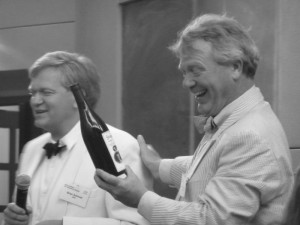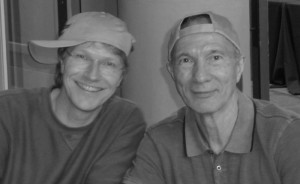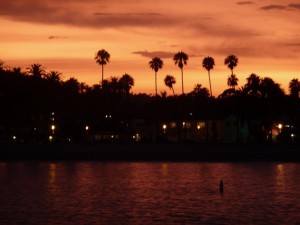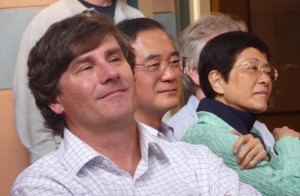Stellar Death

Stars older than the universe. How can this possibly be?
December 15, 2009
Where is the Roman Watch Tower?
December 23, 2009When I was close to the end of my Master in Astronomy at the University of Padua, I do not exactly remember why I decided to do my thesis work on Supernovae, under the supervision of prof. Roberto Barbon. So, sometime in early 1991 I got a date with him and his collaborators to discuss a possible project. At the end of the meeting, one of his two assistants (the inseparable duo Turatto&Cappellaro/Cappellaro&Turatto) gave me four reviews and told me: “Here is all what you need to know about Supernovae“. On the train that brought me back home, I started having a look. It was in fact papers by Robert Kirshner, David Branch, Alex Filippenko and Craig Wheeler, whom I immediately considered as the bosses in the supernova field (and I still do). As seen in retrospective they clearly doomed my fate. Many years have passed, but time does not seem to have had any effect on them. However, they (as we all do) are getting of age.
There is a tradition in the astronomical community: whenever one of the VIPs turns sixty an international conference is organized in her/his honor. Last August it was the turn of Robert (Bob) Kirshner, who was celebrated at the Stellar Death Conference at the Kavli Institute for Theoretical Physics in Santa Barbara (CA). Conferences are ideal to exchange ideas, to see what others are doing, to say things that you would not write in a paper, to brain-storm an so on. But are also great occasions to touch the more human aspect of science, to better know our collaborators (and competitors), to meet brilliant people on grounds which are all but scientific. And this conference was particularly good under all aspects. Basically all people working in the SN field (both theoreticians and observers) were there. More than 150 researchers from all over the world. The conference, which was very well organized, was very fruitful and has clearly shown how active the supernova field is.
As the title of the conference tells you, the topic was the [explosive] endings of stars. And the zoo is getting indeed full of weird beasts. The new searches looking for transient phenomena have already started finding new kinds of explosive events. And more will come in the next years, as the projects get up to speed. These surveys are run with robotic telescopes equipped with wide field of view cameras, able to scan the whole sky in a week or less. They start exploring a time domain that so far was not accessible, and produce huge amounts of digital data at an astounding rate. And, of course, whenever new objects are discovered, new problems and questions come up. This is why astronomy, and science in general, will always have something to work on. Amazing. When Fritz Zwicky started working on Supernovae (actually, he and Walter Baade named them), he had troubles in convincing people that this was worth doing.

Adam Riess is perplexed about "lambda" (left) but he feels much more comfortable with "w" (right). Ask a cosmologist if you wish to appreciate the humor;-)
It was actually Roberto Barbon (who spent some time at Caltech under the supervision of Fritz Zwicky) to tell me that story. Zwicky had started his own supernova search, but it was very hard for him to get funded, essentially because who was distributing the grants did not see the purpose of such an effort. And today we discover about one new SN per day. This number is doomed to grow to thousands per year as soon as the large automatic surveys will be deployed.
The study of supernova explosion is important for a number of reasons. The first, most intuitive one, is that this is really the only way to see the interiors of a star. Normal stars (like our sun), spend their lives in a quiet way, and the only thing we can observe is the radiation they emit (in the case of the sun we also get some particles, the solar wind). And from this we have to deduce how things work in its inner parts. But in the case of a supernova explosion, the star is taken apart. In this process the “normal nuclear burning is altered and so we do not exactly see how the star looked like during its previous life, but still we see how it looks inside.
That is one thing. But then, you can imagine that the ejected material, which travels at speeds exceeding 10,000 km/hour, must have some impact on the surrounding regions. And that is indeed true. It is believed that supernovae are the major contributors to the kinetic energy of the interstellar medium. And so what? Well, the fact is that this energy input is fundamental, for instance, to trigger episodes of star formation. So, dying stars provoke the birth of new stars.
Finally, normal stars synthesize heavy elements (iron, calcium, oxygen, …) in their interiors through the nuclear fusion. However, these elements are doomed to remain buried there forever. Some stars actually lose material from their surface (for instance, planetary nebulae), but a supernova ejects into space large amounts of matter in very short amounts of time. And this has a major effect on the chemical evolution of galaxies. That gas, which is initially dispersed into the interstellar medium, one day would form a cloud, which will collapse and give birth to new stars with a modified chemical composition (or more metal rich, as astrophysicists would tell you).
There are many more reasons why studying supernovae is very important in a general astrophysical context, and all of them had a part in the Stellar Death conference. If you are interested have a look here, were you can also find the online talks. In particular, if you wish to see my presentation, here it is.
Of course, in this kind of conferences there is always lots of young people, PhD students and post-docs, who make the whole thing very lively. And it is actually they who bring a very cheerful atmosphere, which makes evenings very relaxing and entertaining (especially after hours of listening to complex presentations on neutron fingers ;-). I probably do not belong to the young generation anymore, but I kind of pretended it and mixed with them, together with my wife Adele, who always enjoys very much the atmosphere one breaths in these occasions. I think that the night immersions in that beautiful, steaming jacuzzi at the hotel (in hours when it was officially closed) will remain in the memories of many of us 😉
The conference was the best one I have ever attended, for all aspects (the fact that Adele and I were alone, with no kids, like in second a honey moon, is not to be underestimated ;-). I have seen old friends that I had not met for a long time. Like Nikolaj Chugai, head of the Dept. of Astronomy in Moscow, to whom I owe so much. Or Craig Wheeler, whose fascinating personality never stops to surprise me. I will visit him in Texas next year and I already feel excited about it, because he has the power of arising my enthusiasm.
We are all thankful to Bob Kirshner and we wish him to turn sixty again… next year!
Happy birthday, Bob!






